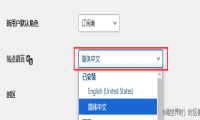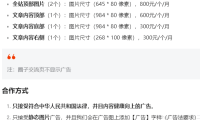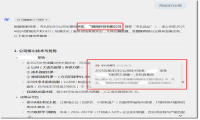基于llama.cpp的GGUF量化与基于llama-cpp-python的部署
前言:笔者在做GGUF量化和后续部署的过程中踩到了一些坑,这里记录一下。
1.量化
项目地址:llama.cpp
1.1 环境搭建
笔者之前构建了一个用于实施大模型相关任务的docker镜像,这次依然是在这个镜像的基础上完成的,这里给出Dockerfile:
FROM nvidia/cuda:12.1.0-cudnn8-devel-ubuntu22.04 # requirements ADD source.list /etc/apt/sources.list RUN apt-get update && apt-get install -y python3.10 python3-pip python3.10-dev vim git # torch COPY torch-2.2.0+cu121-cp310-cp310-linux_x86_64.whl torch-2.2.0+cu121-cp310-cp310-linux_x86_64.whl RUN pip3 install torch-2.2.0+cu121-cp310-cp310-linux_x86_64.whl # llama factory requirements RUN pip3 install transformers==4.38.2 datasets==2.16.1 accelerate==0.27.2 peft==0.10.0 trl==0.7.11 gradio==3.50.2 \ deepspeed==0.13.1 modelscope ipython scipy einops sentencepiece protobuf jieba rouge-chinese nltk sse-starlette \ matplotlib pandas numpy tqdm tensor_parallel scikit-learn \ --no-cache-dir -i https://pypi.tuna.tsinghua.edu.cn/simple # FlashAttention RUN pip install ninja -i https://pypi.tuna.tsinghua.edu.cn/simple RUN pip install packaging -i https://pypi.tuna.tsinghua.edu.cn/simple RUN pip install flash-attn --no-build-isolation -i https://pypi.tuna.tsinghua.edu.cn/simple # gptq RUN pip install auto-gptq --no-build-isolation # awq RUN pip install autoawq # llama.cpp RUN apt-get install -y cmake RUN git clone https://github.com/ggerganov/llama.cpp RUN pip install gguf -i https://pypi.tuna.tsinghua.edu.cn/simple WORKDIR /llama.cpp RUN mkdir build WORKDIR /llama.cpp/build RUN cmake .. -DLLAMA_CUDA=ON RUN cmake --build . --config Release # python build RUN CMAKE_ARGS="-DLLAMA_CUDA=on" pip install llama-cpp-python 这里直接进行了编译,实例化容器可以直接用。
# 构建镜像 sudo docker build -t llm:v1.0 . 这里提供一个脚本用于创建环境。
docker run \ -it \ --rm \ --name quantization \ --network=host \ --shm-size 32G \ --gpus "device=0" \ -v /home/[yourname]/.cache/huggingface/hub/:/root/.cache/huggingface/hub/ \ -v /home/[yourname]/.cache/huggingface/datasets/:/root/.cache/huggingface/datasets/ \ -w /llama.cpp/ \ llm:v1.4 运行脚本后可以直接进入环境。
1.2 量化
量化分为两步:
将原始的模型转换为gguf模型
python3 convert-hf-to-gguf.py [model_path] --outfile [gguf_file].gguf # example Qwen1.5-7b-chat # 注意这里使用的是挂载在的哦参考而中的transformers的默认cache地址 python3 convert-hf-to-gguf.py /root/.cache/huggingface/hub/models--Qwen--Qwen1.5-7B-Chat/snapshots/294483ad23713036574b30587b186713373f4271/ --outfile Qwen1.5-7B-Chat.gguf 注意:这里的转换支持AWQ量化模型的转换,需要注意的是在通过autoawq实施量化时:
... # Quantize # NOTE: We avoid packing weights, so you cannot use this model in AutoAWQ # after quantizing. The saved model is FP16 but has the AWQ scales applied. model.quantize( tokenizer, quant_config=quant_config, export_compatible=True ) ... 量化
./build/bin/quantize [gguf_file].gguf [quantized_gguf_file].gguf [quantize_method] # example Qwen1.5-7b-chat.gguf q4_0 ./build/bin/quantize Qwen1.5-7B-Chat.gguf Qwen1.5-7B-Chat-q4_0.gguf q4_0 2.部署
在llama.cpp介绍的HTTP server中笔者找到了一个在python中可以优雅调用gguf的项目。
项目地址:llama-cpp-python
实施过程可以运行以下脚本(依然可以在docker容器中运行,llama-cpp-python在Dockerfile中已经添加)
from llama_cpp import Llama model = Llama( model_path='your_gguf_file.gguf', n_gpu_layers=32, # Uncomment to use GPU acceleration n_ctx=2048, # Uncomment to increase the context window ) output = model('your_input', max_tokens=32, stop=["Q:", "\n"]) output = output['choices'][0]['text'].strip() 这里给出llama-cpp-python示例中的output的完整形式
{ "id": "cmpl-xxxxxxxx-xxxx-xxxx-xxxx-xxxxxxxxxxxx", "object": "text_completion", "created": 1679561337, "model": "./models/7B/llama-model.gguf", "choices": [ { "text": "Q: Name the planets in the solar system? A: Mercury, Venus, Earth, Mars, Jupiter, Saturn, Uranus, Neptune and Pluto.", "index": 0, "logprobs": None, "finish_reason": "stop" } ], "usage": { "prompt_tokens": 14, "completion_tokens": 28, "total_tokens": 42 } } 3.量化结果比较
这里借助chain-of-thought-hub对几个量化模型进行比较。
模型:qwen1.5-7B-chat
量化:4bit
GPU:4060Ti-16G
目前还没有搞定gptq的gguf导出,后面会再尝试一下。
感谢以下博客:
https://qwen.readthedocs.io/zh-cn/latest/index.html








